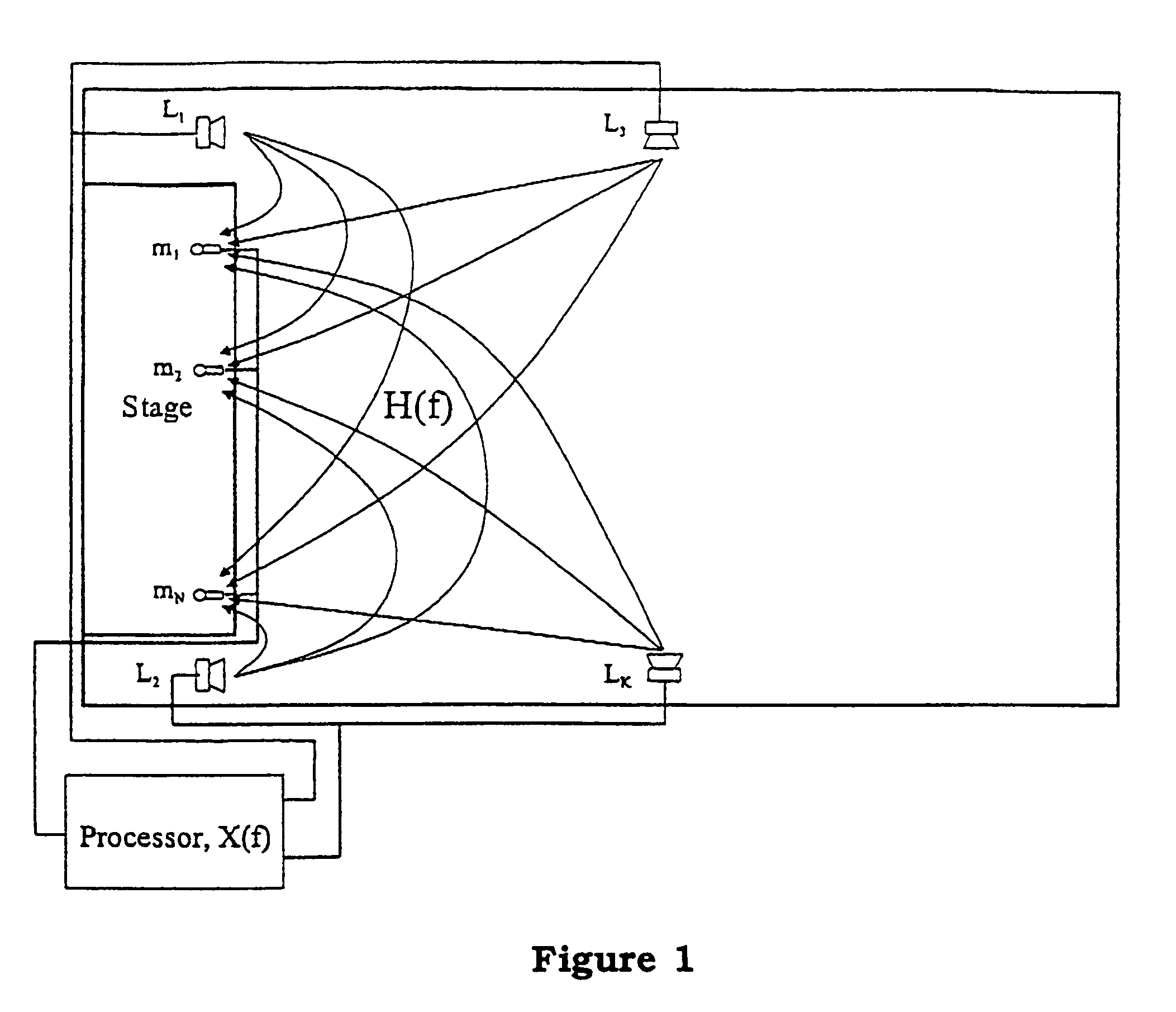In-line early reflection enhancement system for enhancing acoustics
a technology of early reflection and enhancement system, which is applied in the field of in-line early reflection enhancement system and method for enhancing acoustics, can solve the problems of reducing the intelligibility of spoken words, unsuitable speech, and the combined effect of all channels is a significant increase in reverberation and loudness, and achieves the effect of not compromising the stability of the sound system
- Summary
- Abstract
- Description
- Claims
- Application Information
AI Technical Summary
Benefits of technology
Problems solved by technology
Method used
Image
Examples
Embodiment Construction
[0029]FIG. 1 shows the layout of an early reflection system of the invention. A number of microphones m1 to mN are positioned close to the sources on stage. The microphone signals are fed to a processor which generates a number of scaled and delayed replicas of the N microphone signals, and the processor outputs are fed to amplifiers and loudspeakers L1 to LK placed in the room. The transfer function matrix of the processor is denoted X(f).
[0030]The microphones are typically directional, that is, they are sensitive to sound sources positioned on axis, and tend to suppress sound sources (and reflections and reverberation) which are positioned off-axis. This maximises the direct sound pickup and reduces the risk of feedback from the loudspeakers. However, a finite level of feedback may still exist, and if the loop gain of the system is too high, the system will become unstable. The transfer function matrix from the loudspeakers to the microphones is H(f), and the loop transfer functio...
PUM
 Login to View More
Login to View More Abstract
Description
Claims
Application Information
 Login to View More
Login to View More - R&D
- Intellectual Property
- Life Sciences
- Materials
- Tech Scout
- Unparalleled Data Quality
- Higher Quality Content
- 60% Fewer Hallucinations
Browse by: Latest US Patents, China's latest patents, Technical Efficacy Thesaurus, Application Domain, Technology Topic, Popular Technical Reports.
© 2025 PatSnap. All rights reserved.Legal|Privacy policy|Modern Slavery Act Transparency Statement|Sitemap|About US| Contact US: help@patsnap.com



